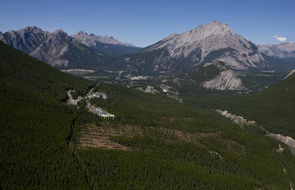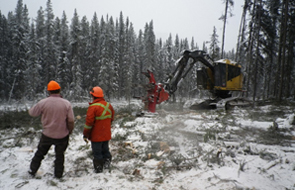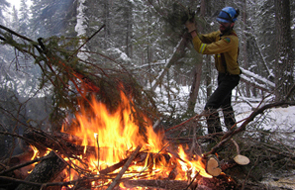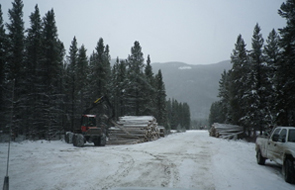Community protection

(left) Aerial view of Forest Thinning work completed on Sulphur Mtn near the lower gondola terminal (right) Guy Nylund, Parks Canada Initial Attack team member burns debris as part of FireSmart work near the Town of Banff © Parks Canada
Every year, towns are evacuated and homes are lost in wildfires across North America. Many of these fires occur in the ‘wildland-urban interface’ – where homes are nestled among trees along the edge of a forest or other flammable vegetation. Communities within the mountain national parks are all within the “wildland-urban interface.”
After decades of fire suppression, the forests around townsites in and around our National Parks, campgrounds and other developments are dense and tangled with woody debris. We’re now used to seeing this buildup in our local forests. Under current conditions, not only are these forests unhealthy, but forest fires can quickly become intense and could lead to catastrophe. Embers can easily leap from burning vegetation to nearby structures and overwhelm fire crews.
Efforts are underway to reduce the risk of wildfire to communities and other developments within the mountain national parks. Parks Canada is an active partner of the “FireSmart” program that focuses on how individuals and communities can work together to reduce the risk of loss from wildfires in communities across Canada.

Contract Crews working on the Moose Meadows Fire Break January 2011
© Parks Canada / Percy Woods
Related links
- Date modified :

